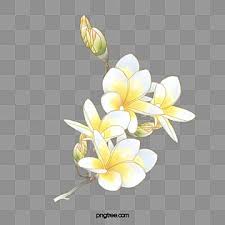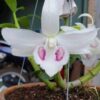# Factors to Consider When Choosing White Egg Orchid Varieties

## Table of Contents
1. **Introduction**
2. **Understanding White Egg Orchids**
– 2.1. Botanical Overview
– 2.2. Characteristics and Unique Features
3. **Factors to Consider When Choosing Varieties**
– 3.1. Climate and Growing Conditions
– 3.2. Flowering Habits
– 3.3. Size and Growth Habit
– 3.4. Disease Resistance
– 3.5. Color Variations and Aesthetics
– 3.6. Fragrance
– 3.7. Availability and Sourcing
4. **Growing White Egg Orchids**
– 4.1. Basic Care Guidelines
– 4.2. Common Growing Mistakes
5. **Popular Varieties of White Egg Orchids**
– 5.1. Overview of Notable Varieties
– 5.2. Comparison of Varieties
6. **Conclusion**
7. **FAQs**
—
## 1. Introduction
White Egg Orchids, scientifically known as *Phalaenopsis amabilis*, are among the most popular orchids globally due to their stunning beauty and relatively straightforward care requirements. These orchids are characterized by their graceful appearance, long-lasting blooms, and diverse varieties, making them a favorite among both novice and experienced orchid enthusiasts. When selecting a variety of White Egg Orchids, several factors must be considered to ensure successful growth and fulfillment of aesthetic desires. This article will explore the essential factors to consider when choosing White Egg Orchid varieties, providing insights into care and maintenance to help you make an informed choice.
## 2. Understanding White Egg Orchids
### 2.1. Botanical Overview
White Egg Orchids belong to the Orchidaceae family, one of the largest families of flowering plants. They are native to tropical regions and thrive in warm, humid environments. The orchid’s long stems produce beautiful, flat flowers that can last for several weeks, making them an excellent choice for floral arrangements and home decor.
### 2.2. Characteristics and Unique Features
Some notable characteristics of White Egg Orchids include:
– **Flowers**: The large, waxy petals are primarily white, with some varieties exhibiting a hint of pink or yellow at the center.
– **Leaves**: Thick, glossy green leaves that are attractive year-round.
– **Growth Habit**: Epiphytic growth, meaning they naturally grow on trees in their native habitat, requiring different care from terrestrial plants.
## 3. Factors to Consider When Choosing Varieties
### 3.1. Climate and Growing Conditions
One of the primary factors to consider when choosing a variety of White Egg Orchid is your local climate. These orchids prefer:
– **Temperature**: Ideal daytime temperatures range between 70-85°F (21-29°C) and nighttime temperatures around 60-70°F (16-21°C).
– **Humidity**: They thrive in humidity levels of 50% to 70%. If you live in a dry climate, you may need to use a humidifier or pebble tray to maintain adequate moisture levels.
Understanding your growing environment will help you select a variety that can adapt well to the conditions you can provide.
### 3.2. Flowering Habits
Different varieties of White Egg Orchids can have varying flowering habits. Some may bloom more frequently or produce larger flowers. Consider the following:
– **Bloom Cycle**: Some varieties have a more extended flowering period, while others may only bloom once a year.
– **Flower Size**: Larger flowers can create a more dramatic display but may also require more support due to their weight.
Select a variety based on how often you want it to bloom and the size of the flowers you prefer.
### 3.3. Size and Growth Habit
The size and growth habit of the orchid are crucial when determining where to place it in your home or garden. Factors to consider include:
– **Plant Height**: Some varieties can grow quite tall, while others remain compact. Ensure you have enough space for the plant to grow.
– **Growth Pattern**: Epiphytic orchids can vary in how they spread out, with some being more bushy and others more upright.
Choosing the right size and growth habit will help prevent overcrowding and allow for adequate air circulation.
### 3.4. Disease Resistance
When selecting a variety, consider its resistance to common orchid diseases and pests. Some factors include:
– **Fungal and Bacterial Resistance**: Certain varieties may be more susceptible to rot and other diseases. Research disease resistance to choose a healthier plant.
– **Pest Resistance**: Look for varieties known for their resilience against common pests like aphids, mealybugs, and spider mites.
Choosing a disease-resistant variety can save you time and effort in maintenance.
### 3.5. Color Variations and Aesthetics
While White Egg Orchids are primarily white, they can have variations that enhance their visual appeal:
– **Color Patterns**: Some orchids may have subtle color patterns or hints of color, such as pink or yellow in the center, which can add interest.
– **Petal Shape and Size**: The shape and size of the petals can vary between varieties, impacting the overall look of the flower.
Consider the aesthetics you desire in your arrangements or displays when selecting a variety.
### 3.6. Fragrance
Some varieties of White Egg Orchids have a delightful fragrance that can enhance the atmosphere in your home. If scent is important to you, look for varieties known for their pleasant aroma.
### 3.7. Availability and Sourcing
Availability is crucial when choosing your orchid variety. Factors to consider include:
– **Local Availability**: Check local nurseries and florists for the varieties they carry. If you have a specific type in mind, ensure it’s readily available.
– **Online Sources**: Many reputable online nurseries offer a wider selection of varieties, but ensure you choose a trusted source to guarantee plant quality.
## 4. Growing White Egg Orchids
### 4.1. Basic Care Guidelines
Once you have selected your White Egg Orchid variety, it’s essential to follow basic care guidelines for optimal growth:
– **Potting Medium**: Use a well-draining potting mix, such as a blend of bark, sphagnum moss, and perlite.
– **Watering**: Water thoroughly when the potting medium is dry to the touch but avoid overwatering.
– **Fertilization**: Use a balanced orchid fertilizer every two weeks during the growing season.
### 4.2. Common Growing Mistakes
Be mindful of these common mistakes when caring for White Egg Orchids:
– **Overwatering**: This is a leading cause of orchid death. Always ensure the potting medium dries out between waterings.
– **Poor Lighting**: While they prefer bright, indirect light, avoid direct sunlight, which can scorch the leaves.
– **Neglecting Humidity**: Orchids thrive in humid environments. Use trays or humidifiers if your home is dry.
## 5. Popular Varieties of White Egg Orchids
### 5.1. Overview of Notable Varieties
Several popular varieties of White Egg Orchids are recognized for their unique characteristics and beauty. Some noteworthy options include:
– **Phalaenopsis amabilis ‘Alba’**: Known for its pure white flowers and attractive foliage.
– **Phalaenopsis amabilis ‘Lynnie’**: This variety features slightly larger flowers with a hint of pink in the throat.
– **Phalaenopsis amabilis ‘Ching Hua’**: Recognized for its stunning white blooms with a delicate yellow center.
### 5.2. Comparison of Varieties
When comparing different varieties, consider their unique attributes:
| Variety Name | Flower Size | Bloom Cycle | Fragrance | Disease Resistance |
|————————-|————-|——————–|—————|——————–|
| Phalaenopsis amabilis ‘Alba’ | Large | Long-lasting blooms | Mild | High |
| Phalaenopsis amabilis ‘Lynnie’| Medium | Frequent blooms | None | Moderate |
| Phalaenopsis amabilis ‘Ching Hua’| Large | Annual blooms | Strong | High |
By comparing these characteristics, you can make a more informed choice about which variety fits your needs best.
## 6. Conclusion
Choosing the right variety of White Egg Orchids involves considering multiple factors, including climate, flowering habits, size, disease resistance, aesthetics, and availability. By understanding these factors, you can select a variety that thrives in your conditions and meets your aesthetic preferences. Whether you’re a seasoned orchid grower or a beginner, the beauty of White Egg Orchids can enhance your space and bring joy for years to come.
## 7. FAQs
**Q1: How often should I repot my White Egg Orchid?**
Typically, you should repot your orchid every 1-2 years or when the potting medium breaks down.
**Q2: Can I grow White Egg Orchids outdoors?**
In suitable climates, White Egg Orchids can thrive outdoors in shaded, humid areas. Ensure they are protected from direct sunlight and extreme temperatures.
**Q3: What should I do if my orchid stops blooming?**
If your orchid stops blooming, ensure it receives adequate light, proper watering, and nutrition. A rest period may also be necessary for reblooming.
**Q4: How can I encourage more blooms on my White Egg Orchid?**
Ensure your orchid receives adequate light, humidity, and temperature fluctuations between day and night to promote blooming.
**Q5: Are there any special tools I need for growing White Egg Orchids?**
Basic tools include pruning shears, a moisture meter, and a potting mix designed for orchids. A humidity gauge can also
help monitor growing conditions.
By considering these factors and following care guidelines, you can successfully cultivate White Egg Orchids, enjoying their beauty and elegance in your home or garden.

